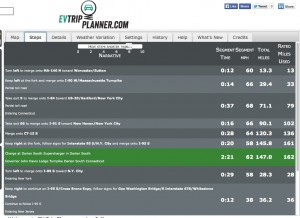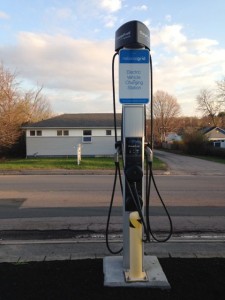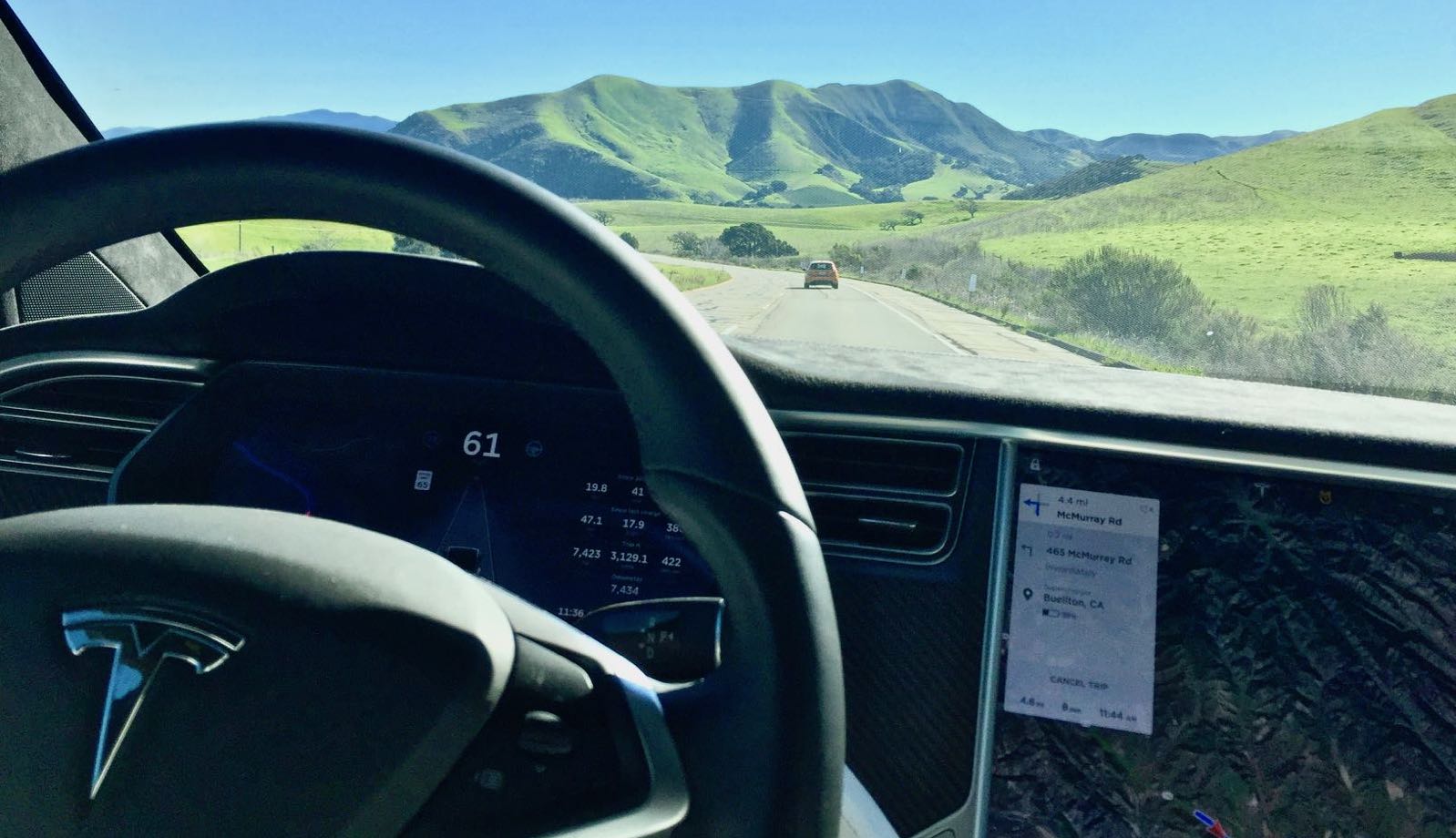Prior to taking delivery of my Model S I was the guy who suffered from incessant thoughts of range anxiety, which soon disappeared as I grew into my ownership experience. I charge daily to 90% in my 85 kWh Model S and drive about 100 miles a day commuting, running errands, etc. I return home with about 140 miles of range left every day which is enough to do it all again without charging. There have been a few longer round trips where I did about 180 miles round trip, and one intentional (but not required) visit to a Supercharger, but none of my trips have required charging en-route or at the destination. As the end of summer approaches I intend on taking two Tesla road trips – one to New Jersey, about an hour east of NYC, and another road trip taking me one hour northeast of Pittsburgh. The New Jersey trip will be taking place this week hence it’s the subject this post. The Tesla road trip to PA will be the subject for of a future post.
Tesla Road Trip Planning
 The first thing to consider is the overall distance of your road trip. With any trip, there are a few routes that one could take, and in my case it’s approximately a 244 mile journey to my destination. If I range charge, I’d have 265 miles of rated range which is merely a prediction of how far I could travel based on many assumptions. It’s not representative of the actual miles that can be driven. Rated miles do not take into account terrain, traffic, air conditioning, pit stops/detours etc. Using EVTripPlanner I determined that I’d likely need a charge along the way just so I can have a safety margin.
The first thing to consider is the overall distance of your road trip. With any trip, there are a few routes that one could take, and in my case it’s approximately a 244 mile journey to my destination. If I range charge, I’d have 265 miles of rated range which is merely a prediction of how far I could travel based on many assumptions. It’s not representative of the actual miles that can be driven. Rated miles do not take into account terrain, traffic, air conditioning, pit stops/detours etc. Using EVTripPlanner I determined that I’d likely need a charge along the way just so I can have a safety margin.
Assuming I leave with a 90% state of charge, I’ll need to charge after depleting 160-190 rated miles just so I can maintain a comfortable buffer. Experienced Tesla road trip veterans are probably much better at estimating the amount of buffer needed based on time of year and weather conditions.
RELATED:
- Top 5 Lessons from a First Tesla Road Trip
- Tesla Road Trip Battery Range Planning
- Reasons to Have a Tesla Tire Repair Kit and 2nd UMC
The next thing I researched are the number of Supercharger locations along my route. There are a many ways of doing this, so I’ll just mention two:
- Google maps – Enter your start and end addresses and then type “Supercharger” and have Google find Superchargers on the map along your route. Pick a good one (or more if needed) as waypoints.
- EVTripPlanner.com – This is a useful EV trip planning site put together by an enterprising 16 year old. Enter your start and destination addresses, select the type of car you’ll be using, and click the “Route through Superchargers” button. This will guide you to your destination through routes that have access to Tesla Superchargers. It’s not perfect and it can add more pit stops than needed so be sure to validate the results and adjust accordingly.
I used EVTripPlanner and found that while it wanted me to stop at both the Milford and Darien, Connecticut Superchargers, I technically would still have plenty of range and be able to skip Milford. From my home to the Darien Supercharger it’s 147 miles but EVTripPlanner estimates 161 rated miles needed. Considering we’re charged to 90% (240 miles), we’ll have plenty of buffer to fulfill the 1st leg at 147 miles.
How Much Charge Do I Need?
The rate of charge in an EV taper offs quickly as it approaches a 100% state of charge. This may add a significant amount of time to your charge. Also EVs charge faster from near empty than they do from half full. When you look at charge times and rates on Tesla’s site, those are generally based on ideal conditions assuming you’re using the latest Supercharger technology and you’re not splitting the charge with someone else that’s in the same Supercharger bank.
ALSO SEE: Top 5 Lessons Learned from a First Tesla Road Trip
In summary, I start with 240 rated miles on a 90% charge. I drive to the Darien Supercharger and use 161 rated miles. I have 79 miles of rated range left. Not enough to get me to my destination hence the reason for my stop. EVTripPlanner estimates 93 miles needed with no safety factor. Safety factors are generally added to standard (not rated) mileage. I need to add some safety factor so lets take the 2/3 approach. 93 x 3/2 = 140 miles of rated range needed to arrive at my destination. So I need to add 61 miles of rated range at the Supercharger to get to my destination and still have a good safety margin.
Tesla claims 170 miles of rated range added in 30 minutes, but as we’ve mentioned above they might be overly optimistic with this. Even so, planning for a 30 minute stop is very reasonable.
Destination Charging
 Unless you’ve “gifted” a charger setup to the people you’re visiting (several have done this), you’re likely to find some poor charging stations at the destination (if any at all). I’ve accepted the fact that the best charge I’ll probably get (at my destination) is from a 110V 15A plug that adds about three miles of rated range per hour.
Unless you’ve “gifted” a charger setup to the people you’re visiting (several have done this), you’re likely to find some poor charging stations at the destination (if any at all). I’ve accepted the fact that the best charge I’ll probably get (at my destination) is from a 110V 15A plug that adds about three miles of rated range per hour.
I’ll definitely poke around when I get there to see if I can find a better charging station / wall outlet, but nevertheless I need to plan for the worst. If I charge the minimum at the Supercharger to get to 140 miles of rated range, drive and use the estimated 102 miles of rated range i’ll arrive at my destination with 38 miles of rated range left. On the way home I need to go back the same route and I need that 140 miles of rated range for the distance plus safety. Oops — I can’t get home.
So I need to add 102 miles of rated range while i’m there. More if I plan on doing things with my car while I’m there like showing it off with test drives, going to dinner, etc. Lets say I need 50 miles to use while I’m there, plus the 140 to get back to the Supercharger. I need to add 152 miles of rated range. At a charge rate of 3 miles/hour, it’ll take approximately 51 hours of charging to regain 153 miles of rated range.
Options:
- Find a Supercharger near my destination – NJ only has one and its more than an hour away. No good.
- Find a faster charger nearby – A local college has a J1772 reported at 30A/240V which would give 18miles rated/hour added. But I’d have to leave my car there or sit there for the charge. Better, but not great.
- Charge more at my Supercharger stop on the way down and arrive with more left.
Charging up more at the Supercharger seems like it would be the best option. I’ll charge back up to 90% (240 rated miles), use 102 rated miles to get to my NJ destination and have 138 rated miles left. If I don’t go anywhere while there, that leaves me with plenty of charge to get back along with a safety margin. If I want to drive around while I’m there, I figured an additional 50 miles of charge will suffice which equates to 16 hours of charging (from a wall outlet) or two overnights. That’s doable.
Planning Complete
The return trip home should be pretty uneventful assuming I did all of my Tesla road trip planning correctly. One last thing to consider is detours along the way. On our way down to NJ we pass by a favorite Sushi place we like to visit in CT. The restaurant is a bit off route and will add a couple miles so I planned for this as well.
I also considered the unlikely scenario where the Darien, CT supercharger was offline when I arrived. What would I do? Fortunately there’s another one on the Northbound side of I-95 and then another only a few miles away on the Merritt parkway. Unlike MA and NJ, CT is pretty blessed with Superchargers!
This will be my first real EV road trip. Relative to the the epic 12,000 mile Tesla road trip taken by the Recargo folks, and many others that are happening daily, mine will be tiny but just as fun. As a new owner that still occasionally struggles with range anxiety, it has been an eye-opening experience having to think about options and and fall back plans – things I never once thought about in an ICE car. A Tesla road trip takes a little more planning. Thanks to the growing Supercharger network “filling up” my Tesla along the way is a minor inconvenience. Oh, and did I mention that using the Tesla Supercharger is free for life?
Tags: road trip, battery













